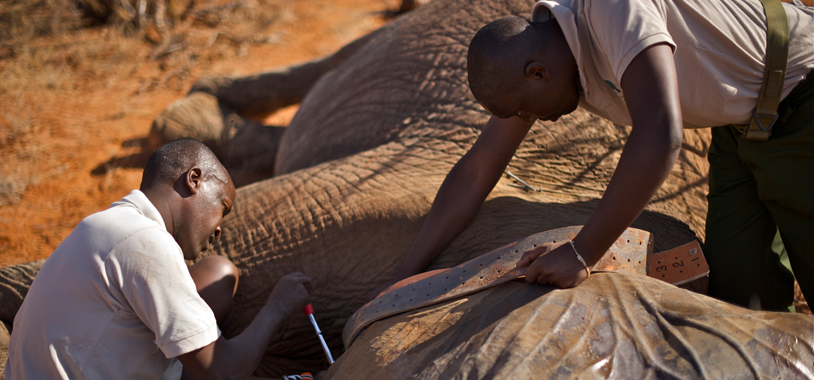Over the past weekend, STE and NRT team put collars on two elephants in Sera. The aim of this collaring operation was to contribute to a wider plan concerning land use management in Northern Kenya in relation to the existing conservancies. In particular to look at corridors, range restrictions and other movement patterns of elephants in this area. Elephants were chosen for this study because of their status as a good umbrella species; representing the spatial requirements of many other smaller species.
Survey
On the day before the main operation, STE sent an aerial search team to locate a few of the previously collared elephants in the north. These elephants were important as they had already been collecting data for a few years, and it would be ideal to re-collar them to ensure the continuity of the data and enable changes in their movements, corridors or ranges to be detected. Unfortunately, for some unknown reason it was not possible to pick up the VHF signals, which is a bad sign as we were sure the location of some of these animals (judging from their previous tracks) were in this area. However, we decided to go on with the operation as the collars were ready and the NRT Team were in place with a chopper organised.
The NRT Team arrived at Sera around 8.30, and the STE Team joined them shortly afterwards at 9.00. When the STE Team arrived in the Sera area the NRT Team was already in action, pushing some elephants which were causing vegetation damage in the Rhino Sanctuary out through gaps in the fence. The STE Team provided support from a higher altitude by being an extra set of eyes to keep track of the elephants. After successfully pushing out a group of 16 elephants, all of the teams headed back to the air strip to make plans for the collaring operation.
Unfortunately we had to wait for the chopper to refuel which delayed things slightly. In the meantime, both of the fixed wing teams were back in the air searching for other elephant groups both within and outside the sanctuary. During the searches more elephants were spotted and a group of 5 bulls were selected as targets for a collar. Finally, the chopper returned, and the teams mobilised quickly. The first task was to push the 5 bulls out of the sanctuary, once this was successfully achieved the collaring could begin.
The Collaring
The first target was a young female in the group of 16 which were previously moved out of the sanctuary. The chopper moved in for darting, with aerial support from the STE Team. After the dart went in the animal went down after 8 minutes, the team quickly landed, checked the condition of the animal and fitted the collar, all in less than 25 minutes.
Both fixed wing planes moved to the second target, whilst the helicopter picked up the second collar. After identifying the target, the bull was darted and went down after 10 minutes. The team landed and checked the condition of the bull; he was very light so the procedure had to be completed very quickly. Everyone got involved, including the chopper pilot, and the collar was fitted correctly. The animal was revived, and after 2 minutes he got up. The teams returned to the main air strip where everyone was anxiously waiting to hear the results of the operation.
In conclusion, the operation was successful as two collars were deployed without any major complications. Despite the success of this operation we are still very determined to look for the original targets for re-collaring. We are looking forward to discovering the movements of the newly collared elephants.


